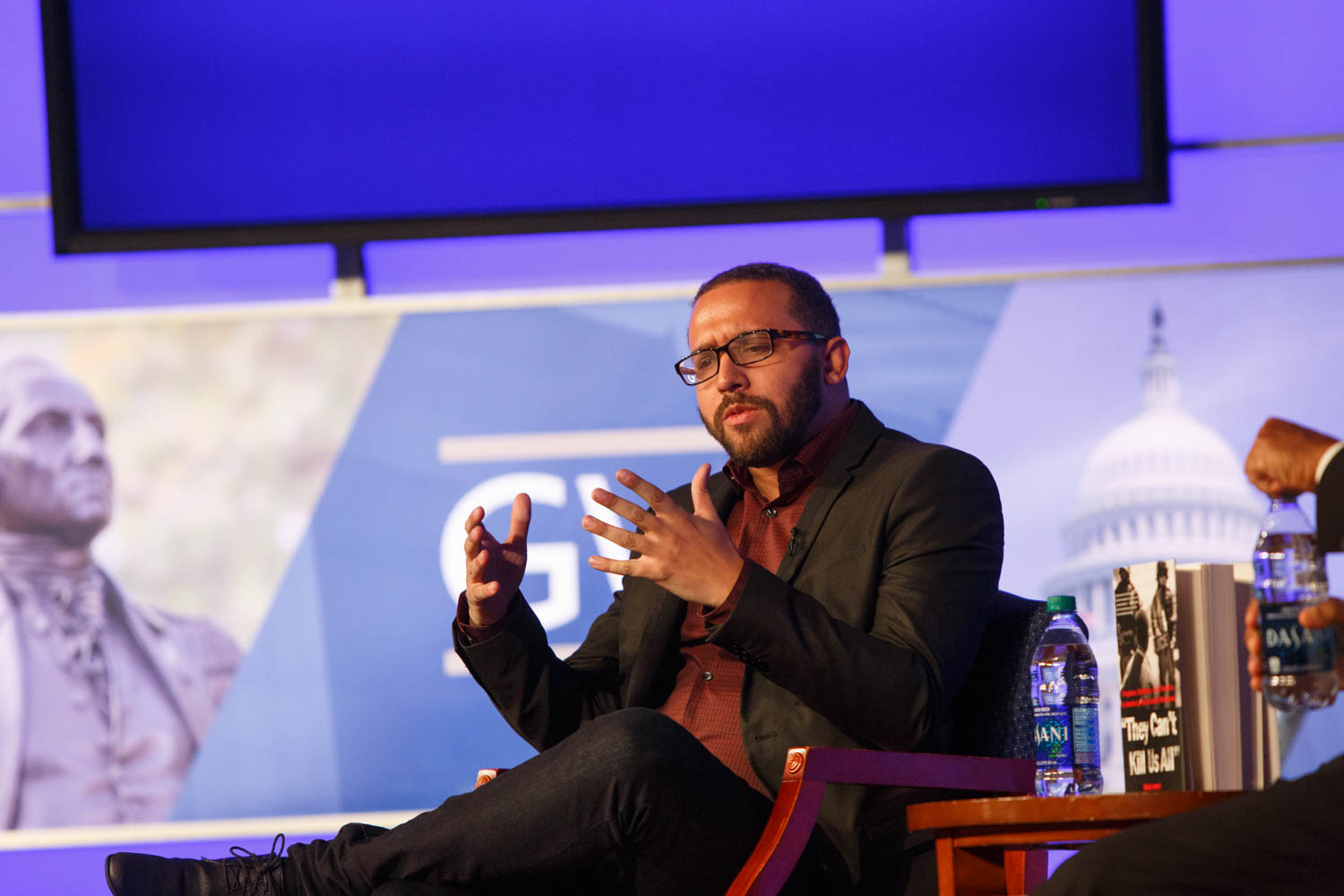By B.L. Wilson
“Whose Streets,” a film documenting the unrest in Ferguson, Mo., is told from the perspective of the residents and activists, starting Aug. 9, 2014, the day that Michael Brown was killed, and ending on the anniversary of the non-indictment of Darren Wilson, the police officer who killed him.
The film begins with a camera panning the rainy nighttime streets of Ferguson and cuts to a sunlit street where a crowd has congregated not far from where Mr. Brown’s body has been lying in the street for hours.
The screening was among a series of events scheduled at GW in observance of the birthday of Martin Luther King Jr. It was sponsored by the GW Multicultural Student Services Center and co-hosted by the GW Association of Black Journalists.
A full house in the Marvin Center amphitheater sat hushed throughout the 145-minute documentary directed by Sabaah Folayan that was followed by a panel discussion with journalists GW Shapiro Fellow and NBC News director Jeffrey Blount and Washington Post reporter Wesley Lowery. School of Media and Public Affairs Professor Imani Cheers moderated the conversation.
Mr. Lowery followed the Ferguson story for more than a year and wrote a book about it, “They Can’t Kill Us All.” He said he was struck by the way the film showed how the tone of nights in Ferguson could change arbitrarily.
“One moment peaceful,” he said. “A lot people in the street, chanting and dancing could very quickly turn into a chaotic and violent evening, very often precipitated by police aggression that was often not captured by the media.”
He said the film did a good job conveying the experience of people who lived in the neighborhood being shot and tear-gassed as they stood on their lawns.
“It’s a feeling of, ‘No, you don’t have any control. This isn’t your home.’ In fact, the police are in control… and they can do whatever they want to you,’” he said.
Dr. Cheers said that newsrooms just get the portrayal of Black men wrong. "I study the history of the representation of black people in the media. There has always been a demonization of black men," she said.
She asked Mr. Blount, who worked at NBC for 34 years, how conventional media coverage of civil unrest compares to events portrayed in the film.
SMPA Professor Imani Cheers (l) moderates a discussion on the documentary "Whose Streets?" with journalists Jeffrey Blount and Wesley Lowery. (Photo courtesy of SMPA)
“Badly,” he said, “especially when race is involved.”
He said it is frustrating for African Americans in newsrooms who constantly fight for a story that is not just about looting but something larger that is at stake, the humanity of the people involved. He recalled a close up in the film of the look of fear on an activist’s face as she confronts the police.
“Decisions are made throughout the day and at meetings about what is going to be covered…but at the end of the day, four white guys go into a room and decide what is going to be seen on that half hour news show,” he said. “Most of our news organizations are not managed on a day-to-day basis by people of color.”
The narrative, however, is shifting, according to Mr. Blount, mainly because of the influence of social media.
Mr. Lowery said social media platforms including Twitter allowed people to see things they otherwise wouldn’t have known about but also sometimes presented difficulties.
“Live streaming allows us to believe we are seeing everything when we are not,” he said. So it requires reporters to use specificity and nuance in language to capture the totality of what is going on.
The audience had questions about the media’s characterization of Black men, the line between telling the truth and advocacy and the media’s coverage of itself.
Mr. Lowery, who was arrested while reporting in Ferguson with the charges later dropped, said the police made little distinction between journalists and others on the streets. They even threatened to shoot him if he didn’t move. He said his colleagues found that hard to believe.
On the other hand, Mr. Blount said, Black journalists face pressure from people in the street who want you to advocate for them. “But it is your job to be factual,” he said, “and not push the story one way or the other, so that you can go back to the newsroom and fight for the opportunity to tell the story in a different way. Advocacy happens in the newsroom, not on the air.”
GW sophomore Elizabeth Bolaji, a journalism and communications major, said “Seeing events in the documentary in such raw detail was hard to watch but it reminded me of why I want to be a journalist. I don’t want another Ferguson-like event portrayed in a way that demonizes the Black community.”



